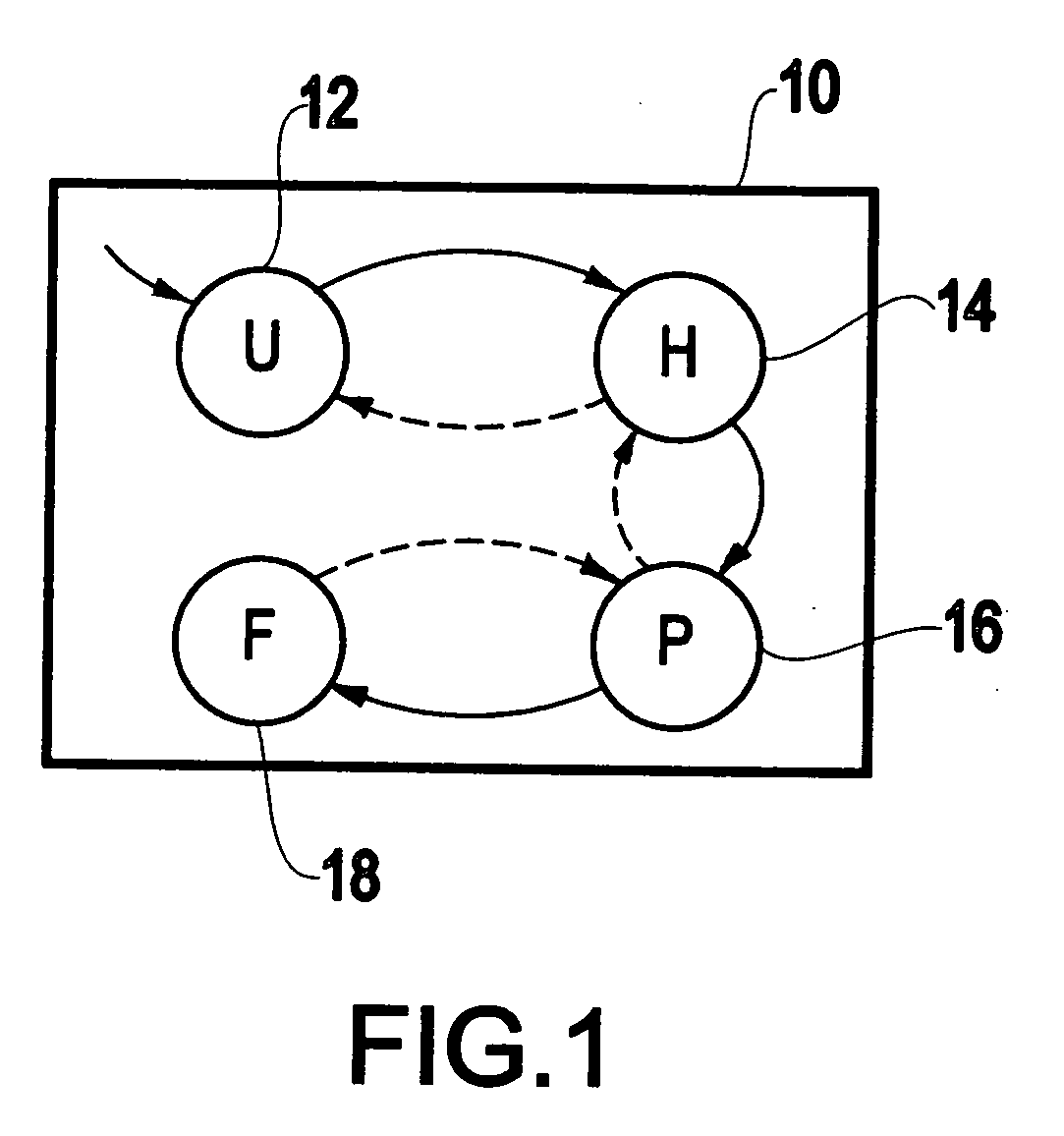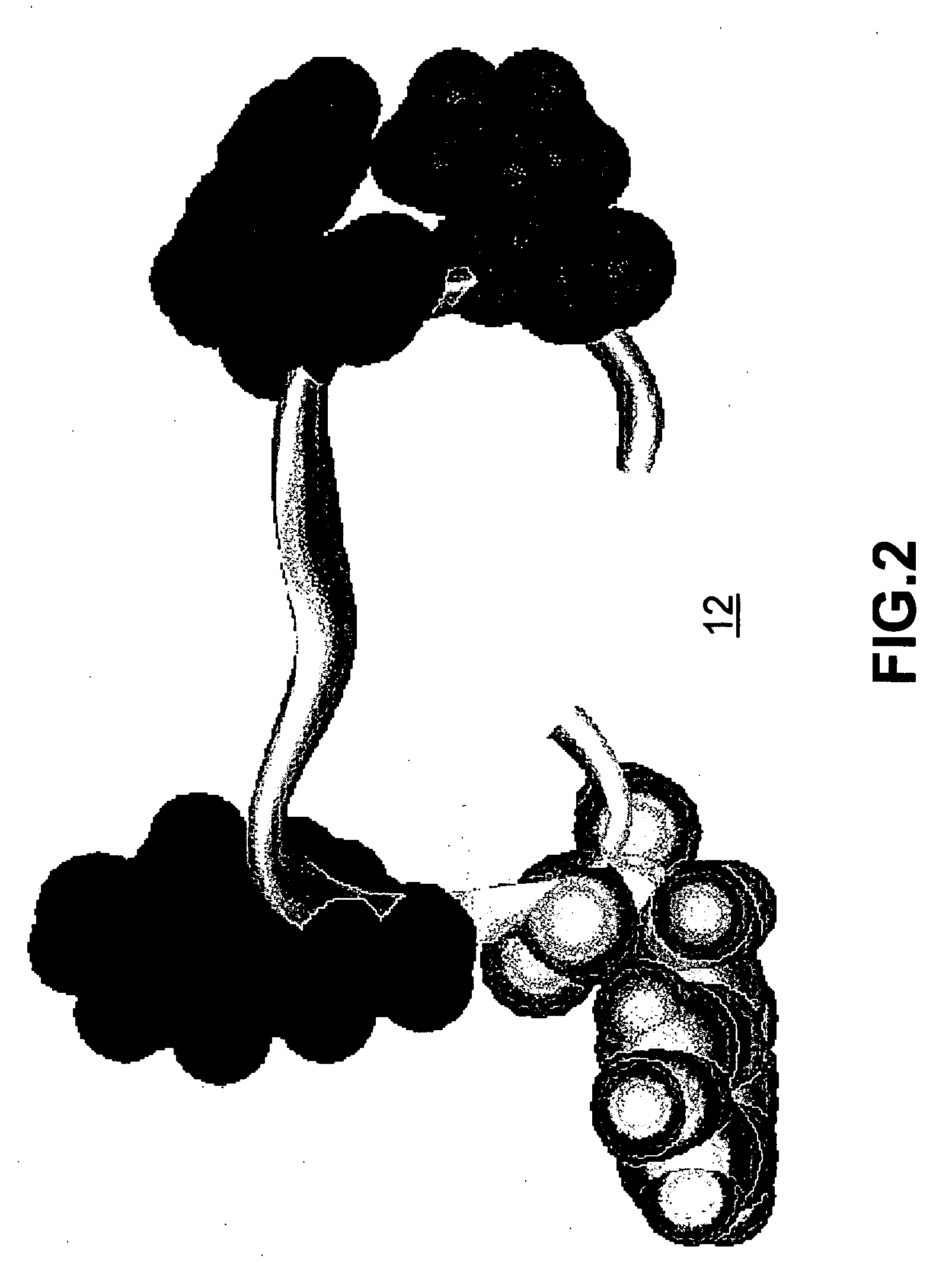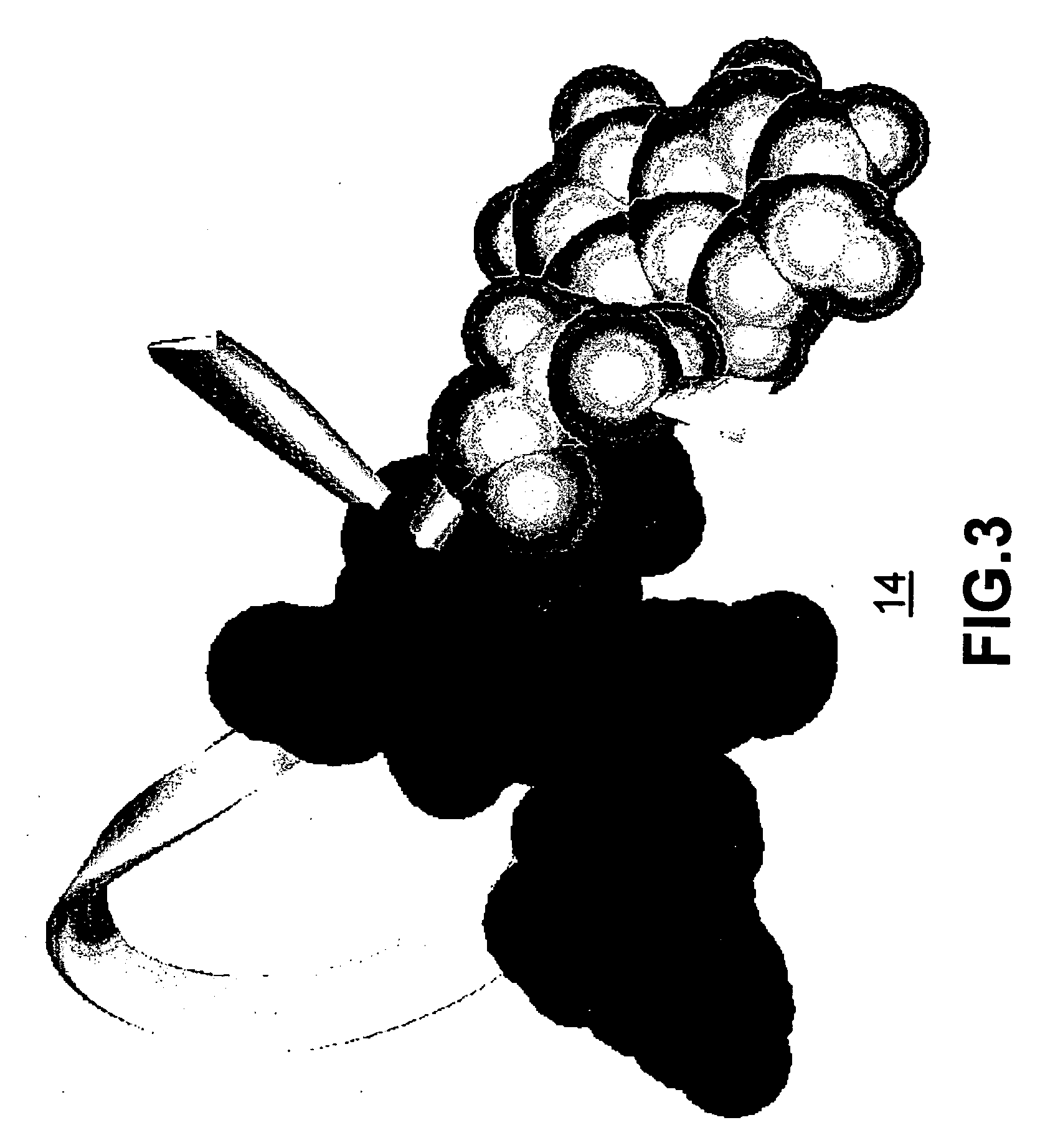Method and system for protein folding trajectory analysis using patterned clusters
- Summary
- Abstract
- Description
- Claims
- Application Information
AI Technical Summary
Benefits of technology
Problems solved by technology
Method used
Image
Examples
Embodiment Construction
[0036] Referring now to the drawings, and more particularly to FIGS. 1-11, there are shown exemplary embodiments of the method and structures according to the present invention.
[0037] Well-known simulation methods exist to carry out the folding of a protein. However, it is often not sufficient to obtain a succinct understanding of the folding process. An exemplary and non-limiting aim of the present invention is to understand the folding mechanism by recognizing intermediate states that the folding process goes through. For example, the folding of a small protein (a chain of amino acids), a β-hairpin, could be understood at a global level in terms of the states shown in FIG. 1. It is a goal to understand the folding of every protein in this simplistic form. The conventional state-of-the-art analysis methods, however, are far from this goal.
[0038]FIG. 1 illustrates a schema of the folding process 10 for a small protein. The exemplary protein illustrated in FIGS. 1-5 is the β-hairpi...
PUM
 Login to View More
Login to View More Abstract
Description
Claims
Application Information
 Login to View More
Login to View More - R&D
- Intellectual Property
- Life Sciences
- Materials
- Tech Scout
- Unparalleled Data Quality
- Higher Quality Content
- 60% Fewer Hallucinations
Browse by: Latest US Patents, China's latest patents, Technical Efficacy Thesaurus, Application Domain, Technology Topic, Popular Technical Reports.
© 2025 PatSnap. All rights reserved.Legal|Privacy policy|Modern Slavery Act Transparency Statement|Sitemap|About US| Contact US: help@patsnap.com



